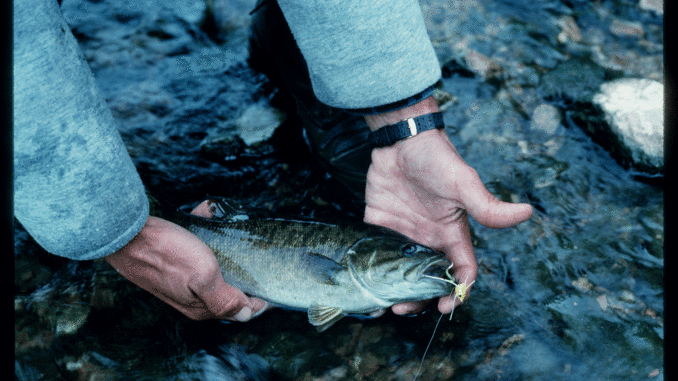
Graham and Swain counties offer trout, walleye and smallmouth bass to anglers with a hankering for the fun of a mixed bag.
When I was a boy growing up in the heart of the Smokies, my Grandpa Joe used to say, in his pithy way, “There ain’t nothing like April.”
His perspective embraced a variety of considerations — joy that the miseries of winter and cabin fever were at an end, delight in plowing and planting the land on his little farm alongside the Tuckasegee River, buying and raising a bunch of biddies that would become Sunday fried chicken dinners in the not-too-distant future, reveling in the beauty of wildflowers, but most of all, rejoicing in fine fishing.
In the latter regard, the Smokies are a place where April angling means an abundance of options. Best of all, in a fairly confined geographical region, it is possible to enjoy some of the finest opportunities the Old North State offers for not one but several species: walleye, trout and smallmouth bass.
In particular, Swain and Graham counties — home to Fontana and Santeetlah lakes, the lower Nantahala River, and a score or so of top trout streams — provide mixed-bag fishing at its finest. What follows is a look at those varied opportunities and some specifics on where (and how) to enjoy them.
One additional thought might be in order. If you have plenty of energy and sleep is low on the priority list, it is possible to enjoy fishing for all these species in a 24-hour period. Take to the trout streams during the day and the lakes at night, although it is also worth noting that the lower Nantahala River — the tailrace section running along US 19/74 — is unique among the state’s designated trout waters in that it can be fished at night. Trout fishermen often talk of a Smoky Mountain slam — catching a rainbow, a brown, and a brookie (speck) in the course of a single day — but why not up the odds a bit by creating a bigger and more diverse challenge? All three trout species, plus a bronzeback and a walleye for a mixed-bag slam would do any versatile angler proud.
When it comes to trout in this part of the world, the options can almost be overwhelming. In terms of accessibility, the best are the lower Nantahala River, the delayed-harvest portion of the Nantahala above the power plant a few miles southwest of Bryson City and Big Snowbird and Big Santeetlah creeks outside of Robbinsville in Graham County. All are hatchery supported, although if you are looking for a meal of fish dressed up in cornbread dinner jackets, the delayed harvest section of the Nantahala is catch-and-release, single-hook artificials only at this time of year. Better still, along with plenty of stocked trout, these waters are home to wild browns and rainbows, and if you are willing to take to shank’s mare, the upper section of Big Snowbird, above Mouse Knob Falls, also holds plenty of the native brookies that locals call “mountain trout.”
The Nantahala is unquestionably one of North Carolina’s top trout streams, despite the fact that it is never, in the gorge area, more than 75 to 100 yards from US 19. Most folks fish it when the water is “off” — when the gates at the dam at Nantahala Lake are closed — but with care and by picking your spots, it can be fished when it full spate. You just have to wade carefully and ignore the steady “hatch” of rafts, kayaks, and canoes. If anything, fishing is better with the water “on,” and a few locals like Mac Brown target huge browns in these conditions. Some index to the appeal of this section of stream is provided by the fact that it was a part of the venue for the 2011 National Fly Fishing Championship.
The delayed harvest section of Nantahala, reached by turning off of US 19 onto Wayah Road at the power plant, is intensively stocked and for the novice, whether fishing with a fly rod, a jig, or a single-hook spinner, it is a great bet for plenty of action. For the most part, the delayed-harvest section lies quite close to the winding road and there are plenty of pull-off spots.
Over in Graham County, both Big Snowbird and Big Santeetlah creeks are accessed off SR 1127 leading to Joyce Kilmer Memorial Forest. For Big Snowbird, turn off SR 1127 onto SR 1115 and follow it to the juncture of Big and Little Snowbird creeks, then turn right on SR 11290 (which becomes a forest service road paralleling Big Snowbird for miles before ending at a spot locally known as The Junction. For Big Santeetlah, follow SR1127 to Santeetlah Gap where the Cherohala Highway begins, as does a forest service road that drops down to the creek. These waters aren’t quite what they once were — thanks to the singularly ill-advised reintroduction of otters that are wreaking havoc with trout populations — but they remain appealing.
These are by no means the only trout options. Several premier wild trout streams in the Great Smoky Mountains National Park, including Noland, Forney, Hazel, and Eagle creeks, empty into the north shore of Fontana Lake. With the exception of Noland, which is reached by the “Road to Nowhere” out of Bryson City, all of these can best be accessed by boat travel across Fontana from one of the many public or commercial marinas along the south shore. In Graham County, other trout options include West Buffalo, Little Santeetlah, Long Branch, Yellow Creek and Talulah Creek.
In this season, all sorts of options in terms of lures and baits work well. For the fly fisherman, an attractor-pattern dry fly such as a Thunderhead, Parachute Adams, Tennessee Wulff or Royal Trude, perhaps trailed by a beadhead nymph such as a Copper John or Prince, can be quite productive. Also, be alert for hatches of Quill Gordons or Green Drakes, and match them as appropriate. The spin fisherman will score well with in-line offerings including Mepps Aglias, Panther Martins, or an old local standard, a gold Colorado blade trailed by a Yellarhammer fly tied on a long-shank hook.
Red worms, nightcrawlers, crickets and hellgrammites are all good choices of baits, and an expert bouncing a worm along the bottom is about as effective a fish-catching machine as you are likely to find. George Monteith from Bryson City used to rely on a simple cane pole-hook-sinker rig and could catch trout like nobody’s business. He would also adopt the same approach, with the only change being the type of bait, as he waded shoals in the Little Tennessee and Tuckasegee to take smallmouth bass.
Novelist Caroline Gordon once said that, when hooked, a smallmouth is “chicken hawk and chain lightning.”
Both Fontana and Santeetlah lakes are prime smallmouth fisheries, and springtime finds bronzebacks in transition from deeper water into shallow areas as they enter their prespawn mode. Boat access — both public launch areas and commercial marinas — are common on these reservoirs. On Fontana, they range from the public ramp on the north side of the Tuckasegee River arm at the end of old NC 288 out of Bryson City to Almond Boat Dock near the juncture of the Nantahala and Little Tennessee rivers and on down the lake on the south shore to Tsali Campground, Panther Creek, Cable Cove, and Fontana Village Marina. All these are accessed off US 28. On Santeetlah, a public launch area is on the reservoir’s south side off Joyce Kilmer Road, and several are off NC 129 along the north side.
In addition to these lakes, the area also is home to three streams that are well worth the attention of the smallmouth aficionado: the lower Tuckasegee River from Dillsboro downstream to Fontana Lake, the Little Tennessee River from Lost Bridge below Franklin downstream to Fontana and the Cheoah River along NC 129 below Robbinsville. The Tuckasegee and Little Tennessee can be floated in a canoe, although some skill is involved and the stretch of the latter shortly before it enters Fontana should not be attempted if the lake is low. It’s Class IV or V water.
Spring fishing for smallmouth, whether in still or moving water, can be productive using a variety of techniques. Popping bugs and streamers will serve the fly fisherman well. The late Luther Turpin, a local legend on Fontana, was partial to a dressed jig known as a “Luther Lure” and was highly effective using it. Crankbaits, particularly in crayfish patterns, cast to rocky points back in feeder fingers can be productive, and natural baits including crayfish, minnows, hellgrammites, nightcrawlers, and, if you can find them, spring lizards (salamanders) are all excellent. In the case of spring lizards and night crawlers, you can add to the fun and save some shekels by catching your own.
Often called “pike” or “walleyed pike” by locals — never mind that it belongs to the perch family rather than being a pike — walleyes were stocked in Fontana and Santeetlah decades ago and, in mountain talk, “took holt.” They reproduce naturally in the bigger streams feeding both reservoirs, and springtime is a great time to catch this exceptionally tasty fish. By April, the annual spawning run is coming to an end, but the lake arms where they spawn are still a prime focal point for fisherman. On Fontana, that means, first and foremost, the Little Tennessee River arm up in the area of the Sandlin Bridge on US19/74, although there are runs on the Tuckasegee and Nantahala arms as well. On Santeetlah, focus on Big Snowbird and Big Santeetlah arms of the lake, although the West Buffalo, East Buffalo, and Talulah creek branches also merit attention.
Finding walleyes is the immediate post-spawn period is the key, and depending on the year, they can be anywhere from the point where still water meets moving streams to well down the lake. Good fish-finding electronics can be a real plus in this regard.
The favorite local techniques vary according to the depth at which walleye are located. When walleyes are still in the river mouths, this can involve Shad Raps worked along the point where moving water settles into the lake, either from the shoreline or from boats using a trolling motor running at speeds just sufficient to keep the lure running smoothly. Later, as the fish move back down lake, anglers need to switch to jigs, often tipped with a nightcrawler, worked in deeper water. In late April and beyond, it may be necessary to plumb greater depths or even turn to downriggers and trolling.
Whether you wade a spring stream for trout, drift, wade or plug for smallmouth, or fish the big mountain reservoirs from a boat, April offers action aplenty in the high country. About the only problems you face, other than uncertain weather, are ones of choice or the temptation which a gobbler screaming somewhere in the national forest might offer to pull you away from piscatorial pursuits.
DESTINATION INFORMATION
WHEN TO GO — Trout season on hatchery-supported streams opens the first Saturday in April. Walleye and smallmouth bass are extremely active throughout April; walleye are finishing their spawn up in tributary rivers and creeks and starting to move back down into lakes, and smallmouth are moving toward the shallows and the spawn.
WHERE TO GO — The Nantahala River offers several sections with excellent trout fishing. Big Santeetlah and Big Snowbird creeks feed Lake Santeetlah and are great trout streams. For smallmouth bass, Fontana Lake and Lake Santeetlah offer top-drawer fishing, as do the Little Tennessee, Tuckaseegee and Nantahala arms. Certain portions of those rivers are great to wade or fish from a kayak or canoe. Bryson City, along US 19/74, is a great jumping-off spot for all these areas.
TACKLE/TECHNIQUES — Trout fishermen target brook, rainbow and brown trout with anything from dry flies to streamers and nymphs. Fishermen using light-action spinning tackle should stick to small, in-line spinners or jigs and tiny soft-plastic trailers. Fishermen who prefer baits can use anything from red worms to nightcrawlers, hellgrammites and crickets, often drifted through likely spots below a cork. For smallmouth bass, topwaters, small crankbaits and jigs are the ticket, although live bait and flies can be productive. Walleye can be caught on small crankbaits, spinners and jigs with nightcrawler trailers.
FISHING INFO/GUIDES — Ronnie Crisp, Mountain Lakes Guide Service, 828-498-2129; James McManus, 153 Charters, 828-421-8125; Almond Boat Park, 828-488-6423.
ACCOMMODATIONS — Almond Boat Park, Bryson City, 828-488-6423; Swain County Chamber of Commerce, http://www.greatsmokies.com/; Graham County Travel & Tourism Bureau, 828-479-3790, http://www.grahamcountytravel.com/;
MAPS — Kingfisher Maps, 800 326-0257, http://www.kfmaps.com/; Tennessee Valley Authority, www.tva.com/river/lakeinfo/index.htm; N.C. Wildlife Resources Commission trout maps, www.ncwildstore.com/troutfismapb.html

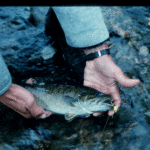
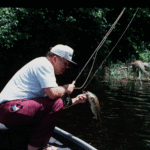
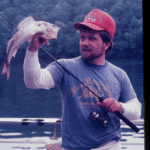
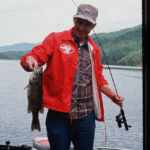
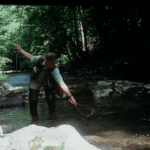
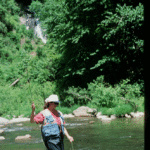

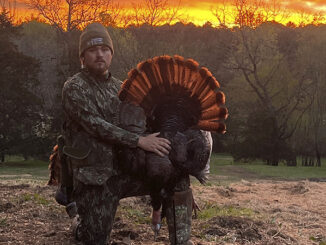

Be the first to comment